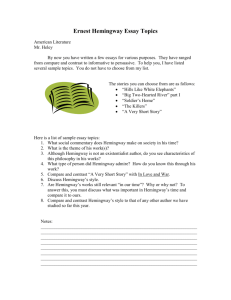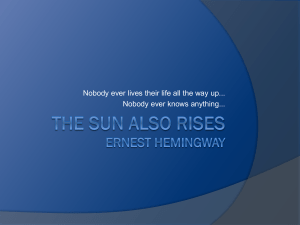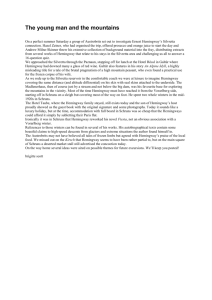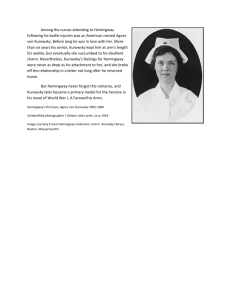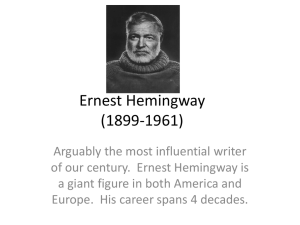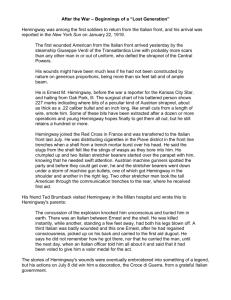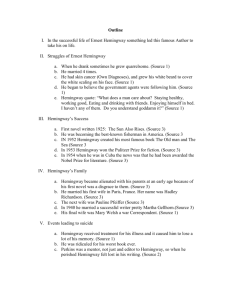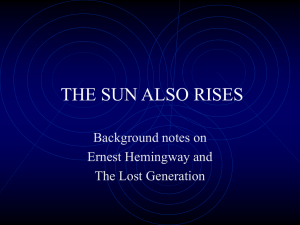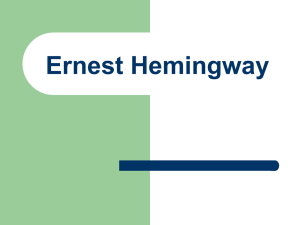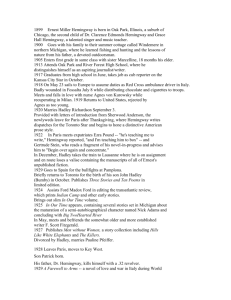Ernest Hemingway The Sun Also Rises (1926)
advertisement
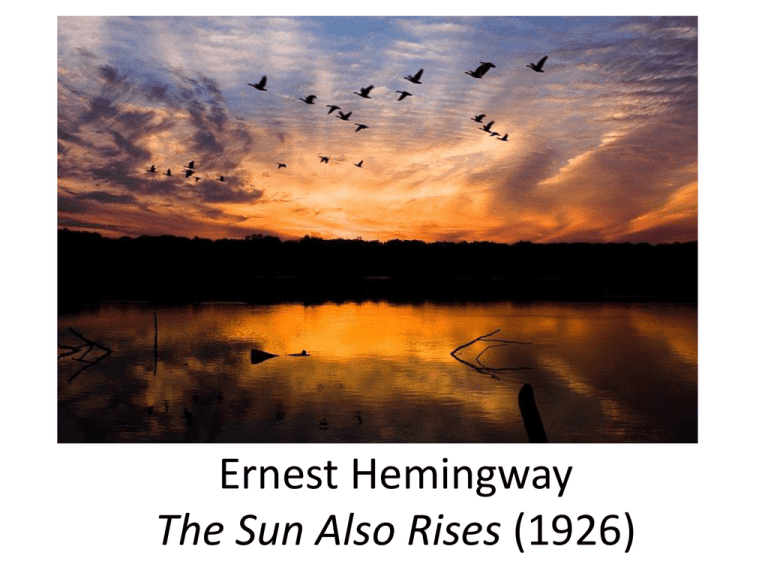
Ernest Hemingway The Sun Also Rises (1926) Ernest Hemingway (1899-1961) Hemingway: “Unless you have geography, background, you have nothing.” - George Antheil, Bad Boy of Music, (New York: Doubleday, Doran and Co.,1945), p. 278 Hemingway during WWI • Worked as ambulance driver for the Red Cross in Italy in 1918 • Wounded by shell and machine-gun fire • Admitted to hospital four days before his nineteenth birthday • Falls in love with nurse, Agnes von Kurowsky Hemingway’s Circle Ernest Hemingway with Lady Duff Twysden, Hadley Hemingway, and three unidentified people at a cafe in Pamplona, Spain, July 1925 Hemingway and Truth • Hemingway: “A writer’s job to tell the truth”. • He believed that fiction could be “realer than real”. Hemingway’s truthful style Beatnik’s stream-ofconsciousness Nonfiction fiction of Truman Capote Romero’s truthful art “Romero never made any contortions, always it was straight and pure and natural in line. The others twisted themselves like corkscrews, their elbows raised, and leaned against the flanks of the bull after his horns had passed, to give a fake look of danger. Afterward, all that was faked turned bad and gave an unpleasant feeling. Romero’s bull-fighting gave real emotion.” - Ernest Hemingway, Fiesta: The Sun Also Rises, (London: Vintage, 2000 [1926]), p. 148 Gertrude Stein, ‘The Lost Generation’ Novel’s Epigraphs: • Gertrude Stein: “You are all a lost generation” Gertrude Stein with Hemingway’s son Jack in Paris, 1924 • Ecclesiastes: “One generation passeth away, and another generation cometh; but the earth abideth forever . . . the sun also ariseth” Mythic parallels Jake says, “I lay awake thinking and my mind jumping around. . . . Then all of a sudden I started to cry. Then after a while it was better . . . and then I went to sleep”. - Hemingway, The Sun Also Rises, p. 27 Odysseus’s plight in the Odyssey: “My spirit was broken within me, and I wept as I sat on the bed. . . . But when I had my fill of weeping and writhing, then I made answer”. - Quoted in Carlos Baker, Hemingway: The Writer As Artist, (Princeton, NJ: Princeton Univ. Press, 1990), p. 88
